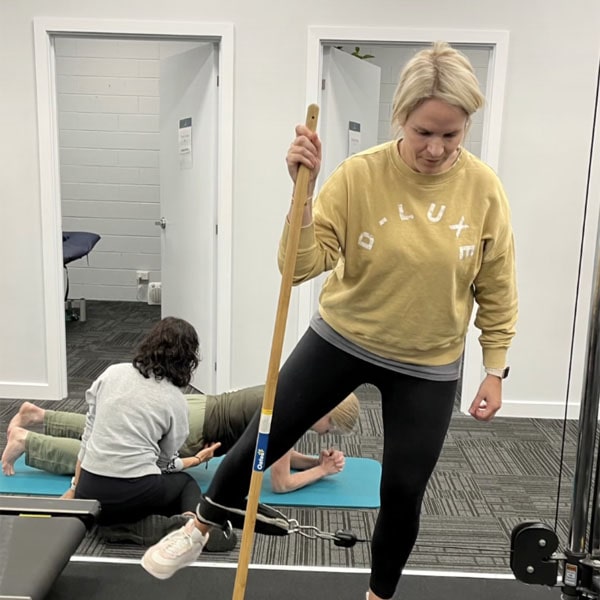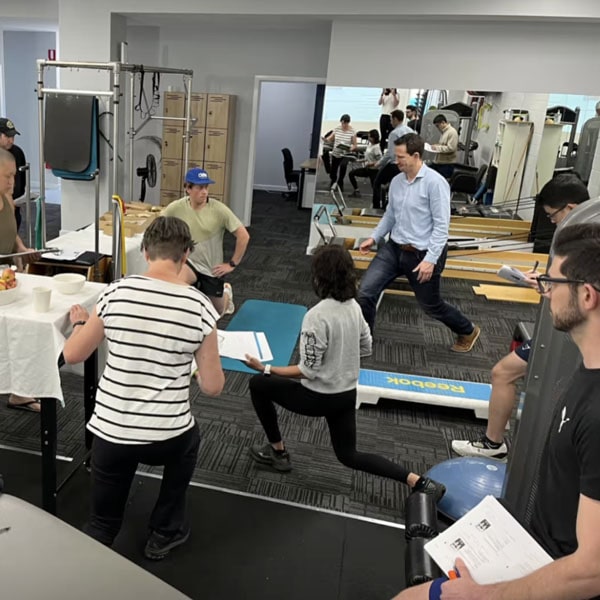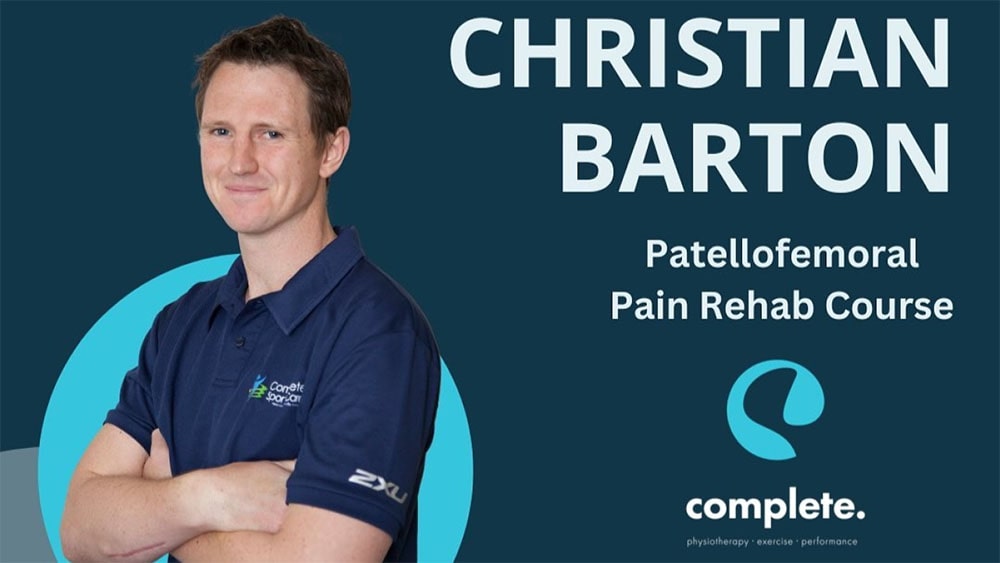Barton, C., de Oliveira Silva, D., Patterson, B., Crossley, K., & Nunes, G. (2019). A proximal progressive resistance training program targeting strength and power is feasible in people with patellofemoral pain. Physical Therapy in Sport, 38, 59-65. https://doi.org/10.1016/j.ptsp.2019.04.010
Barton, C. J., Crossley, K. M., & Macri, E. M. (2018). Should we consider changing traditional physiotherapy treatment of patellofemoral pain based on recent insights from the literature? Br J Sports Med. https://doi.org/10.1136/bjsports-2017-098695
Willy, R., Hoglund, L., Barton, C., Bolgla, L., Scalzitti, D., Logerstedt, D., . . . McDonough, C. (2019). Patellofemoral Pain: 2019 Clinical Practice Guidelines Linked to the International Classification of Functioning, Disability, and Health from the Academy of Orthopaedic Physical Therapy of the American Physical Therapy Association. J Orthop Sports Phys Ther, Accepted May 1st.
(Barton et al., 2019; Barton et al., 2018; Coburn et al., 2018; Crossley et al., 2016; De Oliveira Silva et al., 2020; de Oliveira Silva, Pazzinatto, et al., 2020; de Oliveira Silva, Rathleff, et al., 2020; Holden et al., 2017; Lack et al., 2018; Macri et al., 2020; Nunes et al., 2019; Nunes et al., 2018; Rathleff et al., 2014; Willy et al., 2019)
Coburn, S. L., Barton, C. J., Filbay, S. R., Hart, H. F., Rathleff, M. S., & Crossley, K. M. (2018). Quality of life in individuals with patellofemoral pain: A systematic review including meta-analysis. Phys Ther Sport, 33, 96-108. https://doi.org/10.1016/j.ptsp.2018.06.006
Crossley, K. M., van Middelkoop, M., Callaghan, M. J., Collins, N. J., Rathleff, M. S., & Barton, C. J. (2016). 2016 Patellofemoral pain consensus statement from the 4th International Patellofemoral Pain Research Retreat, Manchester. Part 2: recommended physical interventions (exercise, taping, bracing, foot orthoses and combined interventions). Br J Sports Med, 50(14), 844-852. https://doi.org/10.1136/bjsports-2016-096268
De Oliveira Silva, D., Pazzinatto, M. F., Crossley, K. M., Azevedo, F. M., & Barton, C. J. (2020). Novel Stepped Care Approach to Provide Education and Exercise Therapy for Patellofemoral Pain: Feasibility Study. J Med Internet Res, 22(7), e18584. https://doi.org/10.2196/18584
de Oliveira Silva, D., Pazzinatto, M. F., Rathleff, M. S., Holden, S., Bell, E., Azevedo, F., & Barton, C. (2020). Patient Education for Patellofemoral Pain: A Systematic Review. J Orthop Sports Phys Ther, 50(7), 388-396. https://doi.org/10.2519/jospt.2020.9400
de Oliveira Silva, D., Rathleff, M. S., Holden, S., Bell, E., Azevedo, F., Pazzinatto, M. F., & Barton, C. (2020). Patients and clinicians managing patellofemoral pain should not rely on general web-based information. Phys Ther Sport, 45, 176-180. https://doi.org/10.1016/j.ptsp.2020.07.004
Holden, S., Rathleff, M. S., Jensen, M. B., & Barton, C. J. (2017). How can we implement exercise therapy for patellofemoral pain if we don't know what was prescribed? A systematic review. Br J Sports Med. https://doi.org/10.1136/bjsports-2017-097547
Lack, S., Neal, B., De Oliveira Silva, D., & Barton, C. (2018). How to manage patellofemoral pain - Understanding the multifactorial nature and treatment options. Phys Ther Sport, 32, 155-166. https://doi.org/10.1016/j.ptsp.2018.04.010
Macri, E., Hart, H., Thwaites, D., Barton, C., Crossley, K., Bierma-Zeinstra, S., & van Middelkoop, M. (2020). Medical interventions for patellofemoral pain and patellofemoral osteoarthritis: a systematic review. Journal of Clinical Medicine, In Press.
Nunes, G. S., Barton, C. J., & Viadanna Serrão, F. (2019). Females with patellofemoral pain have impaired impact absorption during a single-legged drop vertical jump. Gait Posture, 68, 346-351. https://doi.org/10.1016/j.gaitpost.2018.12.013
Nunes, G. S., de Oliveira Silva, D., Pizzari, T., Serrão, F. V., Crossley, K. M., & Barton, C. J. (2018). Clinically measured hip muscle capacity deficits in people with patellofemoral pain. Phys Ther Sport, 35, 69-74. https://doi.org/10.1016/j.ptsp.2018.11.003
Rathleff, M. S., Rathleff, C. R., Crossley, K. M., & Barton, C. J. (2014). Is hip strength a risk factor for patellofemoral pain? A systematic review and meta-analysis. Br J Sports Med, 48(14), 1088. https://doi.org/10.1136/bjsports-2013-093305





